The Independent's journalism is supported by our readers. When you purchase through links on our site, we may earn commission.
Sixteen inventors who were killed by their own inventions
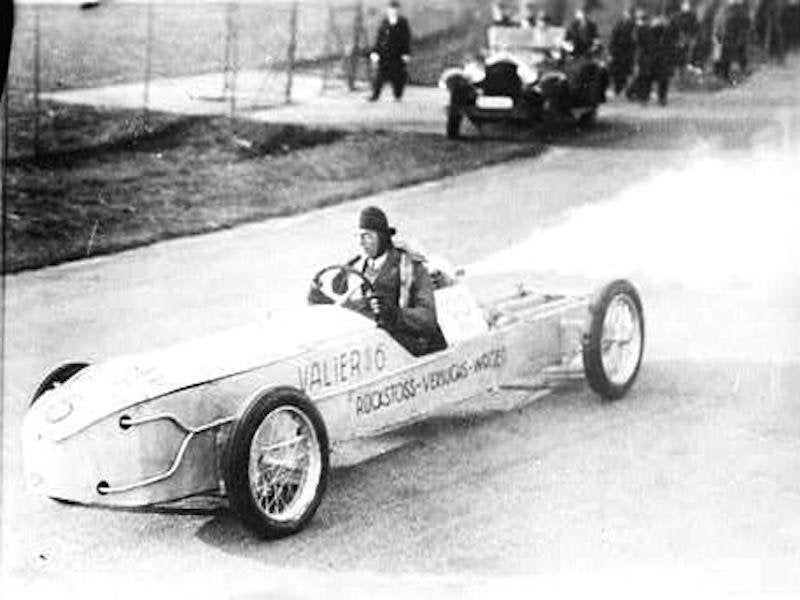
Your support helps us to tell the story
From reproductive rights to climate change to Big Tech, The Independent is on the ground when the story is developing. Whether it's investigating the financials of Elon Musk's pro-Trump PAC or producing our latest documentary, 'The A Word', which shines a light on the American women fighting for reproductive rights, we know how important it is to parse out the facts from the messaging.
At such a critical moment in US history, we need reporters on the ground. Your donation allows us to keep sending journalists to speak to both sides of the story.
The Independent is trusted by Americans across the entire political spectrum. And unlike many other quality news outlets, we choose not to lock Americans out of our reporting and analysis with paywalls. We believe quality journalism should be available to everyone, paid for by those who can afford it.
Your support makes all the difference.Inventions push mankind forward scientifically and economically.
Unsurprisingly, it is the inventor who is often the early tester of those inventions. And some of those inventions pose deadly risks.
We compiled a short list of brilliant engineers, scientists, and old-fashioned daredevils who fell victim to their own ideas.
The co-founder of the Stanley Motor Carriage Company crashed his automobile into a woodpile.
Francis Edgar Stanley and his twin brother invented the Stanley Steamer automobile in 1896. They broke the world record for the fastest mile in 1906 at 28.2 seconds, meaning that their car went 127 mph.
In 1918, the two brothers sold their Stanley Motor business. Later that year, Francis was driving his car when he veered sharply, hoping to avoid an obstacle. The car crashed into a woodpile, and his car overturned.
Source: The Stanley Museum
The first hot air balloonist died while crossing the English Channel.

Jean-Françoise Pilâtre de Rozier volunteered for the first human hot air balloon flight in 1783 because "there was no way" he "was going to let this honor go to an artisan." The flight propelled him into international stardom.
Later on, two others became the first to cross the English Channel by hot air balloon and became the new international superstars.
Pilâtre de Rozier, envious that he was no longer the center of attention, created the Rozière balloon to solve the problems faced by the previous guys. But something mysterious went wrong during his attempt at crossing the English Channel, and he died during the flight.
Source: Ultimate History
Scientists working in a secret New Mexico laboratory called "Omega Site" received lethal doses of radiation from the core of a plutonium bomb.
In 1946, eight scientists including Louis Slotin (who previously worked on the Manhattan project) and S. Allan Kline were working on an "action that would bring into close proximity the two halves of a beryllium-coated sphere and convert the plutonium to a critical state."
Slotin and the team had performed this experiment over 24 times by that point, but this specific time a screwdriver that was keeping the two halves from touching slipped, causing a lethal burst of radiation. Slotin died in nine days.
Source: New York Times
Bullock's printing press crushed his foot. He then developed gangrene and died during his amputation surgery.
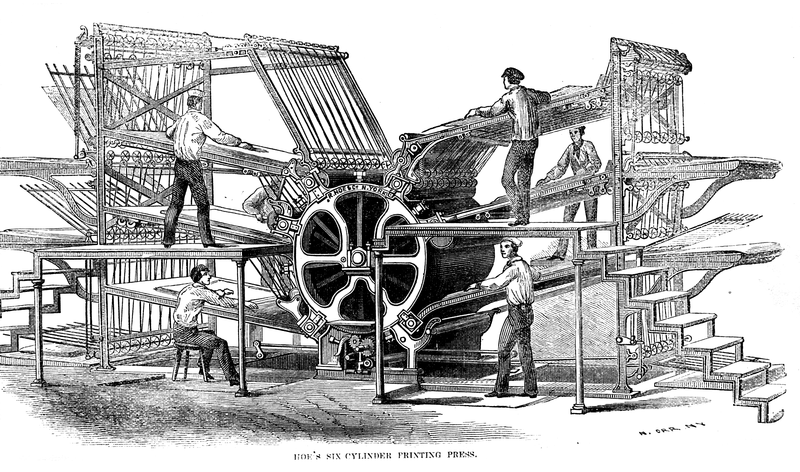
William Bullock invented a better version of the rotary printing press in 1863, which was the first modern newspaper printing press.
In 1867 his leg got caught and crushed in the gears of the printing press — which led to gangrene developing in that leg. He died during the amputation operation.
Source: History Wired, Rootsweb/Ancestry
The man credited with popularizing jogging died while on a morning jog.
James "Jim" Fixx started the jogging trend after publishing several fitness books including "The Complete Book of Running."
He died after a "massive" heart attack during a jog.
Ironically, Fixx actually took up jogging because he worried about his hereditary predisposition to heart disease. His father started having heart troubles at age 35 and later died of a heart attack at age 43.
Source: New York Times
A Bolshevik co-founder hoped to achieve eternal youth via blood transfusions but ended up dying from one.
Alexander Bogdanov originally cofounded the Bolshevik Party with Vladimir Lenin, but he was kicked out of the group by 1909 (before the revolution).
He shifted gears to science, medicine, and psychiatry, even inventing his own discipline, "tektology," an attempt to unify all the sciences.
In the 1920s, Bogdanov began experimenting with blood transfusions to "achieve eternal youth or at least partial rejuvenation." He even persuaded Stalin to create the Institute of Blood Transfusion.
Following 11 blood transfusions, Bogdanov said his eyesight improved and that his balding was "suspended." But he died when he took the blood of a student who had malaria and tuberculosis.
The student made a complete recovery.
Source: Genius Stuff
Titanic's chief naval architect was aboard the ship for its maiden voyage — he was heralded as a hero.
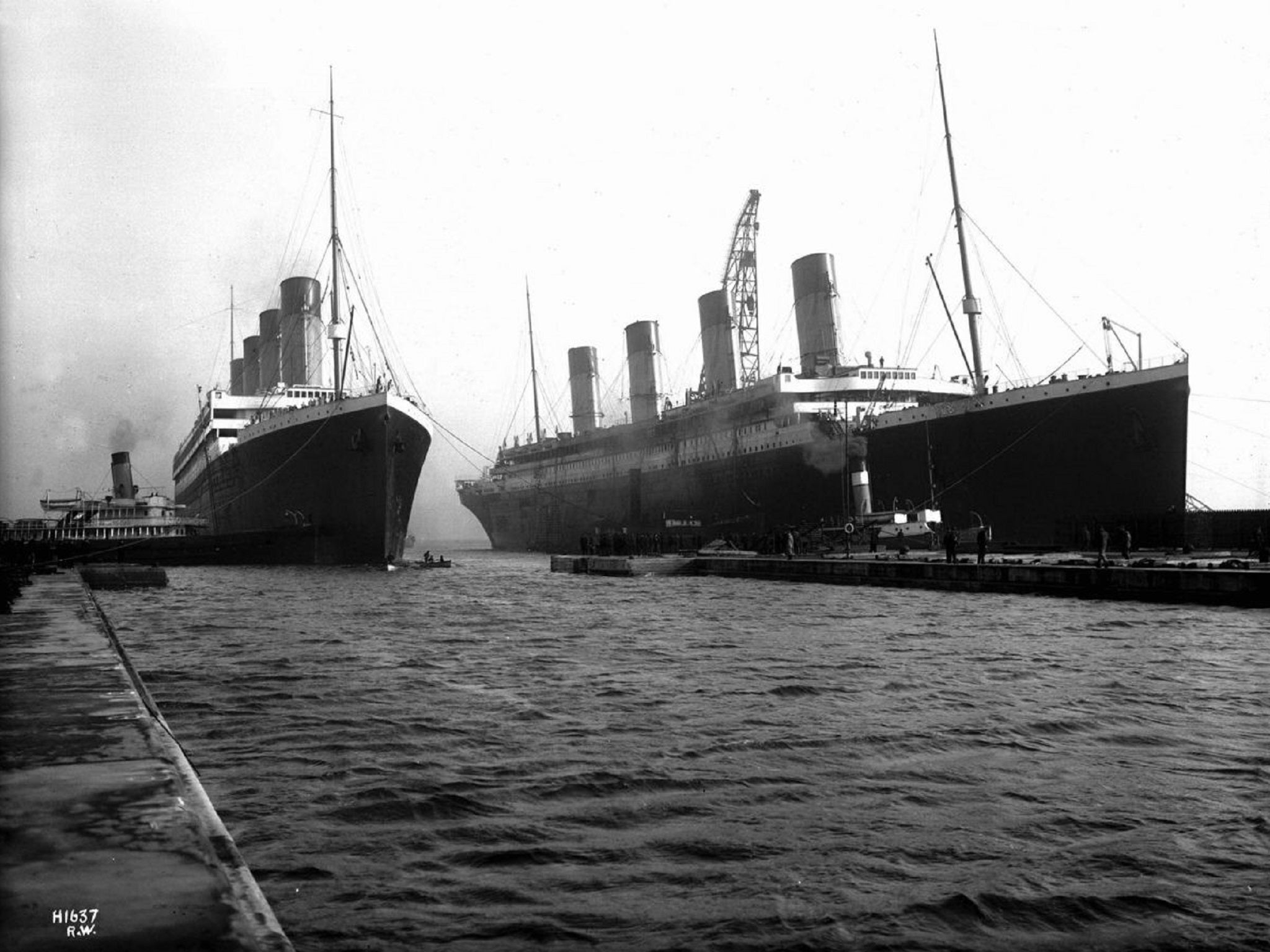
Thomas Andrews designed the ship, and he suggested that the Titanic have "at least 46 life boats." Only 20 were added, despite his advice.
He spent his last hours helping people find life jackets and get into life boats. After helping everyone he could, Andrews was last seen in the first-class smoking room, staring at a painting — "Approach to the New World." His body was never recovered.
He is remembered as a hero.
Source: Encyclopedia Titanica
The inventors of the flying Ford Pinto died when the car's detachable wings detached mid-flight.

Henry Smolinski and Hal Blake invented the AVE Mizar, a flying car with detachable wings.
They envisioned a flying car that would act like a mini helicopter and would travel short distances of several hundred miles between local airports. After the flight, the driver could take the wings off and drive away from the airport.
Both inventors died when the wings detached mid-flight during a test run. There were no attempts at a second model.
Source: io9
The Chancellor under the Qin Dynasty devised the Five Pains execution method — and was later was executed by the same method.
Li Si, the Chancellor under the Qin Dynasty during the third century B.C., devised the "Five Pains" (alternatively referred to as the "Five Punishments") torture method: the victim's forehead was branded; then his nose was cut off; then his feet were cut off; then he was castrated; and then he was executed.
After the death of Emperor Qin Shi Huang, Li Si and the eunuch Zhao Gao decided to override the emperor's wishes and installed their own chosen prince as the successor. Zhao Gao then had Li Si executed in the Five Pains method.
Source: Humanities 360
The "Glider King" lost control of his hang glider and fractured his spine after a 50-foot nosedive.
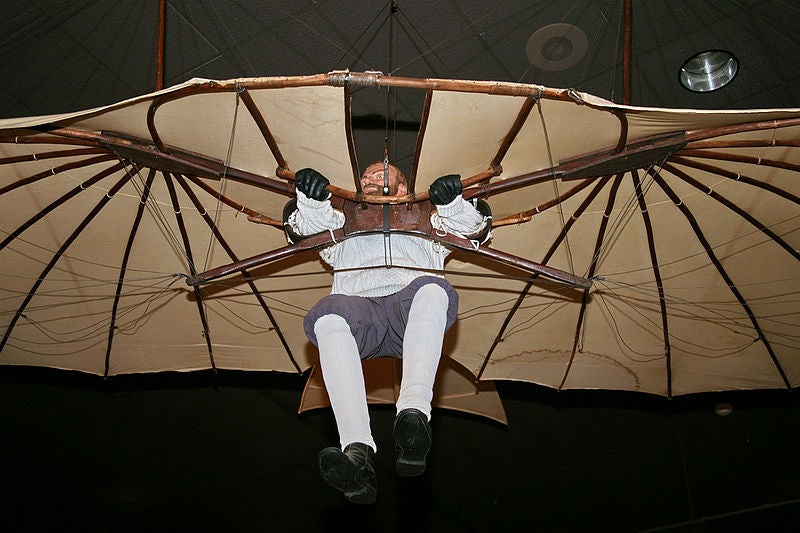
The man who inspired the Wright Brothers — Otto Lilienthal — was the first person to take safe and replicable gliding flights. Before Lilienthal's successes, flying was considered to be an impossibility reserved "for dreamers and fools."
All together, Lilienthal constructed 18 types of gliders — 15 monoplanes and three biplanes — and he took over 2,000 glider flights.
During his last flight he lost control and went into a nosedive, which fractured his spine. While he was lying in the hospital, his last words were "Opfer müssen gebracht werden!", meaning "Sacrifices must be made!"
Sources: Century of Flight
An Austrian inventor was testing a rocket when it accidentally exploded and killed him.
Max Valier was interested in moving forward rocketry, and he hoped to advance toward spaceflight. In 1927, he created the Spaceflight Society, and in 1928 he created rocket cars that accelerated up to 145 mph. And if that wasn't enough, in 1929 he created a rocket-powered sled that hit 250 mph.
After his vehicular successes, he started to experiment with rockets using liquid propellant, hoping to soon experiment with rocket-powered aircraft. A rocket accidentally exploded, killing Valier in 1930.
Source: New Mexico Space Museum
The author of a 10th century Arab dictionary leapt from the roof of a mosque and attempted to fly with two wooden wings.

Abu Nasr Isma'il ibn Hammad al-Jawhari was lexicographer and theologian in the 10th and 11th centuries who is best remembered as the author of an Arab dictionary.
He also leapt off the roof of the Nisabur Mosque in a failed attempt to fly with two wooden wings.
Source: "Winged Words: Flight in Poetry and History"
Marie Curie won two Nobel Prizes for physics and chemistry but later died from exposure to radiation.
Marie Curie is credited with the discovery of radium and polonium and for numerous advances in radioactivity (a word she invented). Her work led to the development of X-rays.
For her work, she was awarded the Nobel Prizes in Physics and Chemistry. That made her the first woman to win the Nobel Prize and the only woman to have been awarded the Nobel Prize twice. She remains the only PERSON to win a Nobel Prize in two different sciences.
Her research exposed her to a lot of radiation, though, and she died of leukemia in 1934.
Source: BBC
A daredevil stuntman died after he rolled off the Houston Astrodome in his shock-absorbent barrel.
Karel Soucek is probably best known as the eighth person to go over the Niagara Falls in 1984 in a homemade barrel.
In 1985, Soucek rolled off the Houston Astrodome in another self-designed barrel in front of an audience of 35,000. A water tank below the Astrodome was supposed to soften Soucek's fall — however, the barrel clipped the edge of the tank. Soucek's skull was fractured, and his chest and abdomen were crushed.
Source: LA Times
"The Flying Tailor" jumped off the Eiffel Tower and attempted to fly with his clothes-parachute.
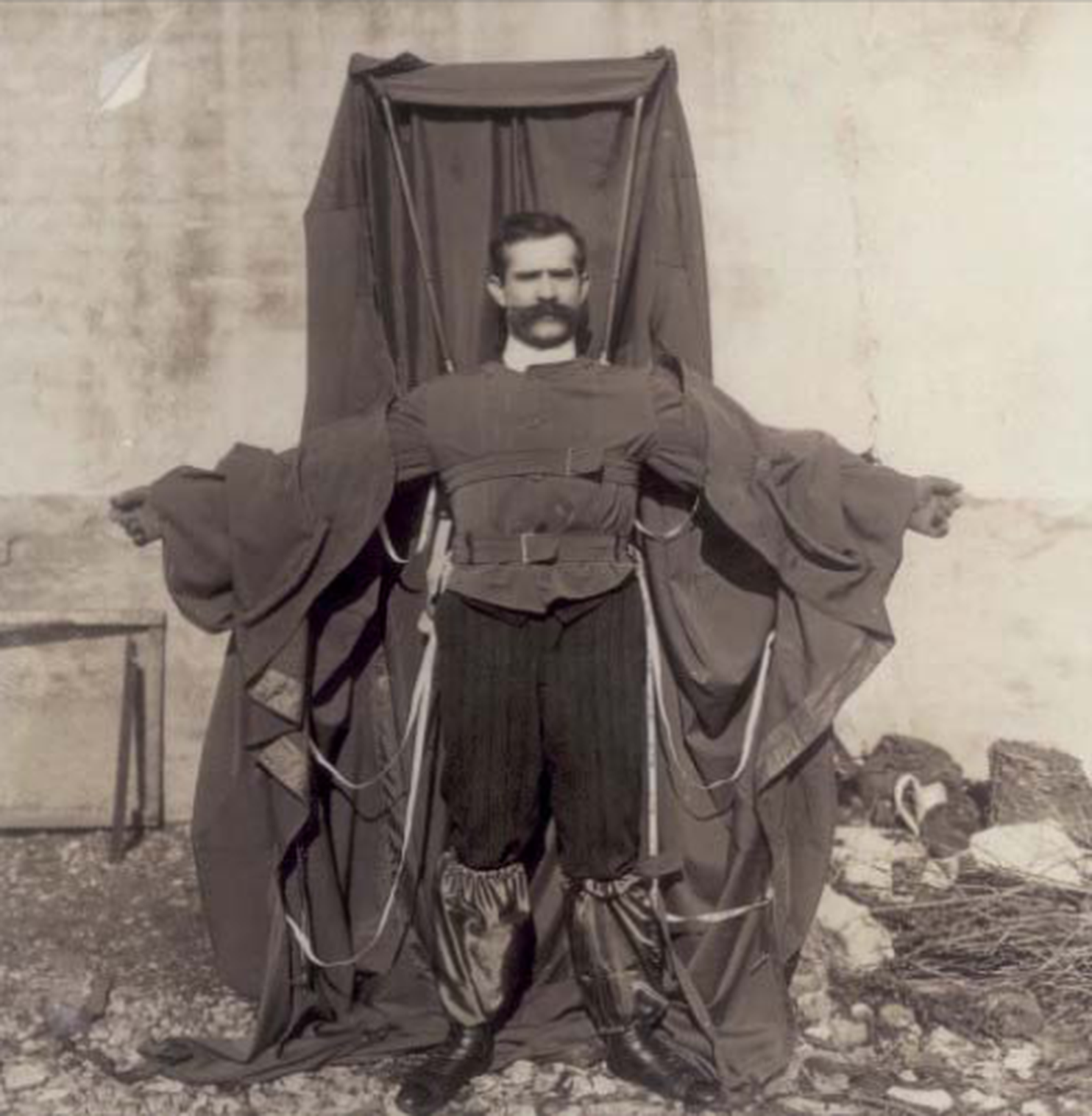
The French tailor-slash-inventor Franz Reichelt designed a "vêtement-parachute" (clothes-parachute). To test his invention, he jumped off the Eiffel Tower in 1912. His flight was unsuccessful.
According to a 1912 article from the now-defunct Le Temps, Reichelt was given permission to do this experiment by the Parisian Police, although they were under the impression that he would be using a dummy.
Source: La Presse (Feb. 5, 1912)
The Soviet inventor of a propeller-driven rail car died after the machine derailed during a test run.
Valerian Abakovsky designed a propeller-driven rail car that was intended to transport officials quickly across the Soviet Union — a useful idea given the country's large land mass.
The project was canceled after the car derailed during a test run in 1921.
Source: Engineering and Technology Magazine
BONUS: Legend has it that a 16th century Chinese local government official tied 47 rockets to a chair and tried to fly to the moon.
According to a Chinese legend, Wan Hu, a local government official during the Ming Dynasty, aspired to travel to the moon.
Use of rockets has been reported all the way to 1232 in China (back to when the Chinese were at war with the Mongols). As a result, it's possible that Wan Hu had access to rockets.
He was said to have attached two kites and 47 gunpowder-filled rockets to a chair and asked 47 servants to light the rockets. According to the legend, there was an "enormous bang" — and Wan and his contraption disappeared.
It's unclear whether the Wan Hu story is true, but a lunar crater was named Wan-Hoo in his honor.
Source: CNN
• The 16 countries with the most powerful passports
• The 10 best low-cost airlines in the world
• 9 lifestyle changes to make if you want to earn more money in 2017
Read the original article on Business Insider UK. © 2016. Follow Business Insider UK on Twitter.
Join our commenting forum
Join thought-provoking conversations, follow other Independent readers and see their replies
Comments